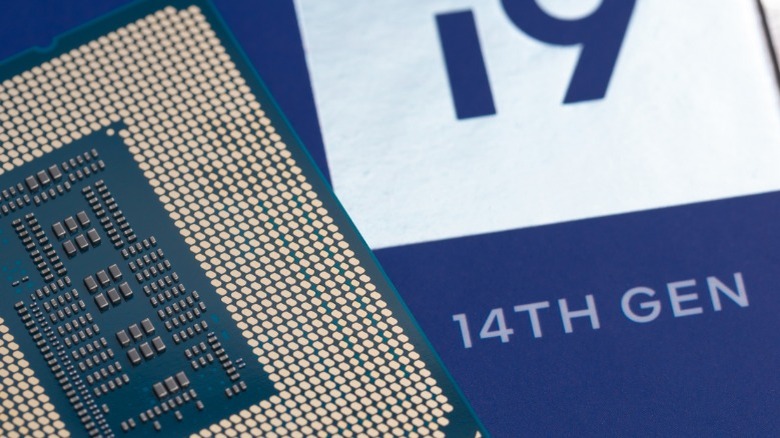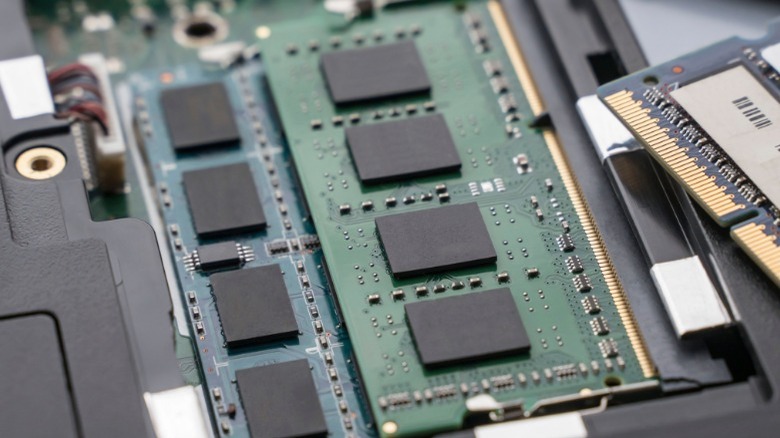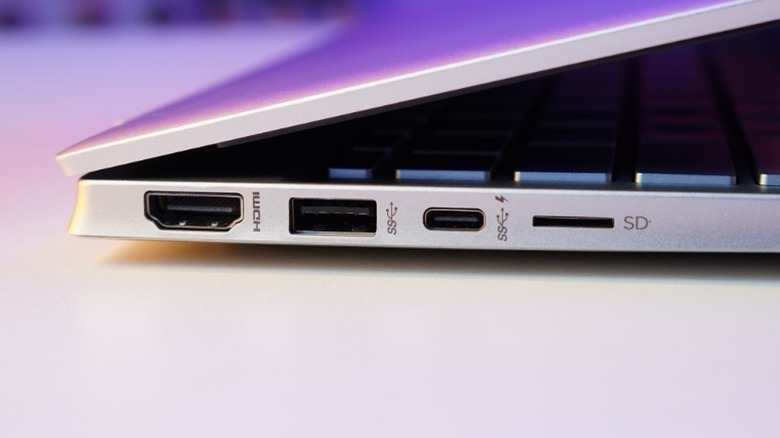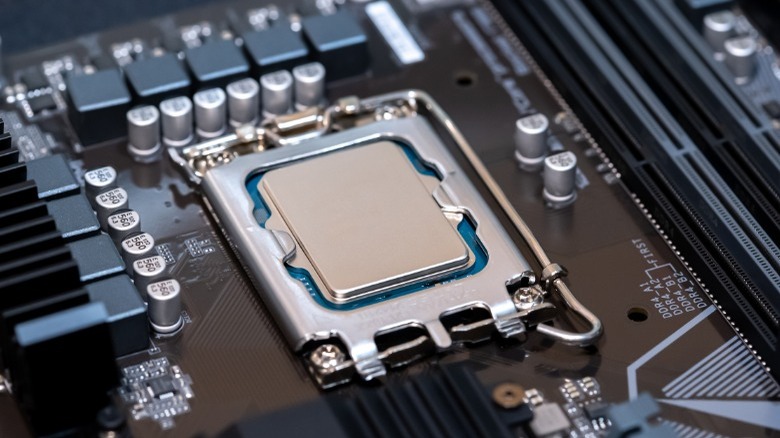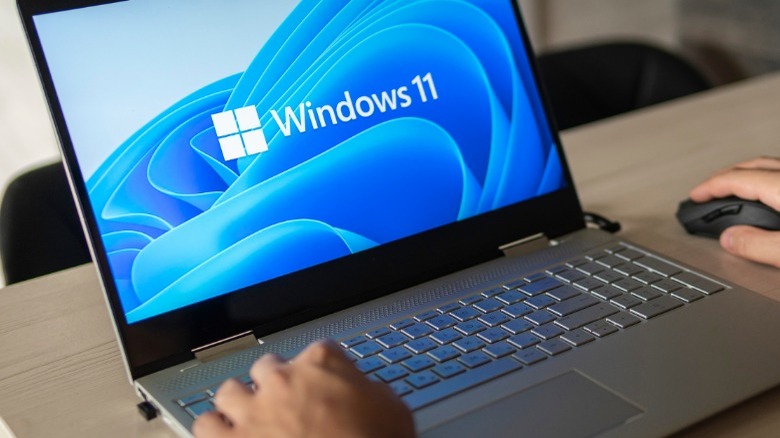7 Things You Need To Check Before Buying A Used Laptop Or Desktop PC
So, you start seeing signs that your computer is getting too old — the screen keeps freezing, the hardware starts making weird noises, and the system is unbearably slow. And now, you need a replacement ASAP. Yes, ASAP because trying to go by a day without one would be a real struggle. After all, this is where you draft those client reports, edit your family photos, and even binge-watch those documentaries on space exploration. It's especially hard to live without a computer if this is where you do your work.
However, replacing a beat-up computer with something brand new may not always be an option for you. Perhaps you're on a budget, don't like waiting weeks for delivery, or want to avoid adding to the e-waste problem. In that case, you can go with a used computer. This way, you get higher specs for less, and if you buy locally, the unit can be handed to you quickly. Plus, buying used is more eco-friendly. But don't just hand your money to the first seller you see online. Here are six things you first need to check before buying a used laptop or desktop PC.
Know what CPU specs you need
When looking for a laptop or desktop, check the specifications to be sure the computer can keep up with your usual tasks. The top specs to be mindful of are the processor, RAM, storage drive, and GPU. Let's dive into the processor first since it's the brains of the computer.
There are two processor families you'll typically come across: The Intel Core (Core i3 to i9) and AMD Ryzen (Ryzen 3 to 9). What you need to look out for are the performance tiers and the generation number in the CPU name. For both Intel and AMD processors, look at the figure after Core/Ryzen and the first one or two numbers after that. For instance, an Intel Core i7-1165G7 means that it's an i7 performance tier from the 11th generation. Meanwhile, in an AMD Ryzen 5 7600X3D, 5 is the performance tier, and 7 is the generation. The performance tiers tell you how capable the CPU is, while the generation indicates how new it is. The higher the tier and generation, the more powerful (and expensive) the chip is.
That said, the Intel Core i3 and Ryzen 3 are the lowest performing but also the most budget-friendly, ideal for mundane everyday tasks. The Core i5 and Ryzen 5 are great for productivity work and casual gaming, while the Core i7 and Ryzen 7 are perfect for high-end gaming. The Core i9 and Ryzen 9 offer the best performance. Unless you'll be doing high-intensive tasks on the computer, you can comfortably go with an i5 or Ryzen 5. In terms of generations, the Intel Core is currently in the 14th generation, while AMD is in its 9th generation. Avoid going below the 8th gen for Intel Core and second or third gen for AMD Ryzen as they won't support Windows 11. When choosing a CPU, it's also a good idea to check its release date to properly gauge just how old it is.
Pin point what RAM, storage, and GPU specs you want
Now, let's get into the RAM, GPU, and storage drive specs. How much RAM you need for your Windows computer depends on your use. Modern systems include a minimum of 8GB, which can handle most of your everyday productivity tasks (anything less can make things feel sluggish). However, 16GB is better for gaming, and if you want to stream on top of that, go with 32GB RAM. When it comes to the storage drive, aim for an SSD or solid-state drive since they're faster than HDDs. The size should be no less than 256GB, but keep in mind that a quality 1TB hard drive is as affordable as $74 new.
Aside from the RAM and storage drives, you'll mostly be concerned about the GPU if you're gaming on the computer. GPUs can either be discrete/dedicated GPU or integrated graphics. Discrete GPUs are more powerful thanks to their own memory, so they're better for demanding tasks. Integrated graphics, on the other hand, don't come with their own resources, so they're not as capable. However, that doesn't mean you can't play on a computer with integrated graphics. Games like "Stardew Valley" and "Minecraft" actually run just fine. For more intensive games like "Marvel's Spider-Man," "The Witcher 3," and "Grand Auto Theft V," though, you'd either need to switch to the lowest settings (which can impact the experience) or buy a computer with a dedicated GPU.
Verify the computer specs and price
Once you find the computer that fits your specification preferences, you'll need to do two things: Price match these specs against similar new and used models and verify that the computer indeed has the specs listed. To do a price match, find the exact computer model on the manufacturer's website and check out how much it costs to buy brand new. There should typically be a significant difference, especially if the used computer is already a few years old. If it's only down less than 20% and is already over a year old, you're likely overpaying for it.
If the manufacturer no longer sells the exact model, search for used ones of about the same age on platforms like Facebook Marketplace, Mercari, or eBay. Then, compare their prices with what the seller offered so you can gauge whether it's a good deal. If you're buying a desktop computer with custom parts that the seller installed themselves, check the individual prices of these parts (both new and used) to better assess the value of the computer.
To confirm these specs on the device, you'll need to inspect it yourself. A simple way to do this is to open the System Information tool (search for System Information in the Start menu). Here, you'll see key specs, such as the processor, installed physical RAM, GPU, storage drive/s, and other system details. Aside from knowing the exact specs of the laptop, research whether the laptop is upgradable. This way, you can replace or add bigger RAM and storage should the need arise.
Check the display and peripherials
The parts you'll most frequently use are the input and output devices, so these should be the top priorities to check before buying a used laptop or desktop. First off, check the screen (if it's a laptop or an all-in-one computer). Look over the display for any physical damage, like cracks, scratches, and pressure marks (discolored irregular splotches). Inspect the frame around the screen to make sure it's still intact. If it's a laptop, open and close the lid to confirm the hinges are still in good condition, not wobbly or cracked.
Then, turn on the computer and go to Dead Pixel Test on your browser. It's an easy way to see if there are any dead or stuck pixels on your screen. They're essentially dots that don't change color even as you display different shades. Although one or two might not significantly affect your user experience, they could help you haggle the price.
Next, test the microphone, camera, headphone jack, and speakers. The easiest way to do so is to record a short video of yourself talking using the native camera app. Then, using wired headphones or earbuds, listen to your recording. Unplug the headphones/earbuds to test the speakers afterward.
Finally, move on to the keyboard and trackpad. You can check them via Key-Test Keyboard Test Online on your browser. Simply press each one of the keys on the keyboard and buttons on the trackpad and make sure they register. Afterward, open the note app and start typing, verifying there are no jammed or sunken keys, keys that type multiple times with one press, or keys that type the wrong character. If your keyboard also has a backlight, check if you can turn it on and adjust the brightness and color (if those are options).
Test the ports and slots
When examining the computer's ports and slots, start with a visual inspection. Look inside each port and slot to verify that there are no damaged or missing connectors. Check the casing itself for any concerning dents, cracks, or chips. Afterward, test each port and slot, checking whether the connection feels snug enough and not loose. If you're buying a laptop, observe whether the battery level increases after a few minutes.
While checking the ports, make sure to confirm the types of USB and HDMI connectors, too. Many modern laptops and desktops feature USB-A (rectangular) and USB-C (smaller oval-shaped) ports. For USB-A, it's a case of USB 2.0 vs. 3.0. You'd want to go with a USB 3.0 (marked "SS") since it offers 5 Gbps file transfer speeds, compared to USB 2.0's 480 Mbps. For USB-C, you'll encounter either a standard USB-C or a Thunderbolt port. They look alike but have different symbols (USB label for USB-C and lightning bolt for Thunderbolt). Between the two, you might want the Thunderbolt if you're going to game or edit videos on the computer, as it supports dual 6K monitors and external graphic cards. For general use, you can get away with the standard USB-C port. It's still pretty capable for file transfers (up to 40 Gbps speeds) and charging (up to 100 W).
In terms of the display connector types, it's typically a choice between HDMI or DisplayPort. HDMI looks like an inverted trapezoid, while DisplayPort is rectangular with one angled corner. DisplayPort is the preferred connector for gaming and media editing, with features like multiple monitor support, Dolby Vision games support, and Adaptive Sync that smooths out the graphics by eliminating tears and stutters. For everyday use, though, HDMI is still okay, although you'd likely have to use a splitter if you want more than one monitor.
Check the internal hardware
Diagnostic tools are your best friends when dealing with the computer's internal hardware. For instance, to test the CPU, there's the easy-to-use Intel Processor Diagnostic Tool for Intel CPUs and the AMD Ryzen Master for AMD CPUs. The Intel tool puts the chip under a stress test and checks whether its features are functional. Meanwhile, the Ryzen Master shows you a performance overview to make sure it's not going over healthy limits during your typical tasks. To test the RAM, simply run the built-in Windows Memory Diagnostic app from the Search menu. Then, head to the Event Viewer app, navigate to Windows Logs > System, and double-click on the MemoryDiagnostics-Results entry. The result should say "detected no errors" in the General tab and "pass" in the Details tab.
For the storage drives, launch the Terminal app or Command Prompt from the Start menu. Then, type wmic diskdrive get status,model and look for an OK status. To check the laptop's battery health on Windows, open Terminal again and input powercfg /batteryreport. The generated report will tell you the battery's design capacity (original capacity designed by manufacturer) and full charge capacity (current max capacity due to wear). It's normal for them to differ as batteries degrade over time, but if the full charge is much lower, it's likely due for a replacement.
To inspect the fans in a PC tower, simply open the case and inspect them while the computer is on. This is also a good time to see whether the other internal hardware is in good physical condition — no exposed or old cables, signs of damage, or dirt buildup. For fans on laptops and all-in-one desktops, the manufacturer often has a fan diagnostic tool, like the HP PC Hardware Diagnostics UEFI and Lenovo Diagnostics, accessible via the BIOS or an app. You can also go with a fan speed monitor like SpeedFan if it's compatible. For the Wi-Fi and Bluetooth modules, all you really need to do is connect them to their respective devices and see if they work as expected.
Software
If the laptop or desktop you're buying comes with an OS pre-installed, verifying its legitimacy should be part of your evaluation. Open Settings and navigate to System > Activation. You should see Active next to Activation State. Expand the option and make sure it says "Windows is activated" or "Windows is activated with a digital license." If it says, "Windows isn't activated," the error is likely because the product key is invalid. If it says, "Windows is activated with a digital license linked to your Microsoft account," that means there's a Microsoft account connected to the license.
You'll need to remove this once you're sure you'll buy the computer. Doing so is as easy as resetting the laptop or PC and using your own Microsoft account to log in. Unfortunately, Microsoft doesn't come with a tool that can validate the authenticity of the Windows product key. However, you can spot a genuine Windows installation by looking at the Microsoft Windows hologram label on the computer and comparing it to the authentic labels.
You should also check whether the BIOS has a password. Access the BIOS of the computer (different per manufacturer) and make sure it doesn't ask for a password. If it does, have the seller remove it once you buy the product. Being able to freely go into the BIOS is important as this is where you can do things like troubleshooting, system diagnostics, and changing the boot sequence (when you want to use a live USB instead of your local OS).
While in the BIOS, look for Computrace, too (typically found in the Security tab). Computrace is designed to help companies track their lost or stolen computers. Since you'll be owning the device, it shouldn't be activated at all, so have the owner disable it before buying the computer. When using the computer, also time how long it takes to boot. You'll typically only have to wait less than a minute, but if it takes longer than that, it may be an indication of malware, failing hardware, or too many installed programs starting up.

